Hello everyone! We're excited to share some key updates regarding our marketing strategy that will drive our growth and strengthen our brand presence in the market. As we navigate through an ever-evolving landscape, it's essential to adapt our approach to stay ahead of the curve and better connect with our audience. Want to know how these changes could impact our business and your role? Let's dive in and explore more about this exciting new direction!

Clear Objective and Vision
The recent marketing strategy update emphasizes a clear objective--enhancing brand awareness across key demographics. The vision includes utilizing digital platforms like Instagram and Facebook, aiming to increase engagement by 30% in the next six months. This initiative targets millennials and Gen Z, particularly in urban areas such as New York City and Los Angeles, where research indicates a higher propensity for online shopping. The updated strategy also highlights the importance of sustainable practices, aligning brand messaging with consumers' growing environmental concerns. Metrics for success will include website traffic and conversion rates, tracked via analytics tools, to ensure continuous improvement in marketing efforts.
Audience Segmentation
Audience segmentation involves categorizing potential customers into groups based on shared characteristics or behaviors. Effective segmentation can enhance marketing efforts, targeting specific demographics like age, income, or geographic location, which can lead to improved engagement and conversion rates. For example, a fashion retailer may segment audiences into categories such as millennials, working professionals, and retirees, allowing tailored marketing messages that resonate more strongly with each group. Utilizing data from consumer behavior analysis and purchasing patterns also aids in identifying high-value segments, ensuring that resources are allocated efficiently for maximum impact. Enhanced personalization through segmentation can foster customer loyalty and drive sales growth in competitive markets.
Marketing Channels and Platforms
In the rapidly evolving landscape of digital marketing, diverse channels and platforms play a vital role in reaching target audiences effectively. As of November 2023, our updated marketing strategy identifies key channels such as social media networks (including Facebook, Instagram, and TikTok), email marketing campaigns, and search engine optimization tactics focused on Google and Bing. This strategic shift aims to maximize engagement by leveraging data-driven insights that highlight consumer behavior trends. By integrating tools like Google Analytics to monitor website traffic and utilizing platforms such as Hootsuite for social media management, we can enhance our outreach efforts. Our commitment to adopting innovative marketing approaches ensures not only brand visibility but also strengthens our connection with customers in various demographics across different regions.
Measurement and Analytics
The implementation of a comprehensive Measurement and Analytics strategy is essential for evaluating marketing performance across various digital channels. The integration of advanced analytics tools, such as Google Analytics 4 and Tableau, allows for real-time data visualization, enabling clearer insights into user engagement and conversion rates. Key performance indicators (KPIs) such as return on investment (ROI) and customer acquisition cost (CAC) will be monitored to assess the effectiveness of campaigns in targeted markets, influenced by demographics, geographic locations, and behavior patterns. Regular reporting schedules will facilitate data-driven decision-making, ensuring alignment with overall business objectives and driving continuous improvement in marketing efforts.
Implementation Timeline
A detailed implementation timeline is crucial for the successful rollout of the updated marketing strategy at our headquarters in New York City. The initial phase begins on January 15, 2024, focusing on market research (targeting consumer behavior and preferences) and competitor analysis (studying top five competitors in the tech industry). This phase is set to conclude by February 15, 2024. The second phase, running from February 20 to March 15, 2024, includes the development of creative content (advertisements across digital platforms) and social media campaigns (targeting platforms like Instagram and LinkedIn). The final phase, scheduled for March 20 to April 30, 2024, will involve the evaluation of campaign performance (using KPIs such as engagement rates and conversion metrics) and adjustments based on feedback (gathered through surveys and analytics). Adhering to this timeline will be essential for meeting our quarterly targets and enhancing brand visibility.

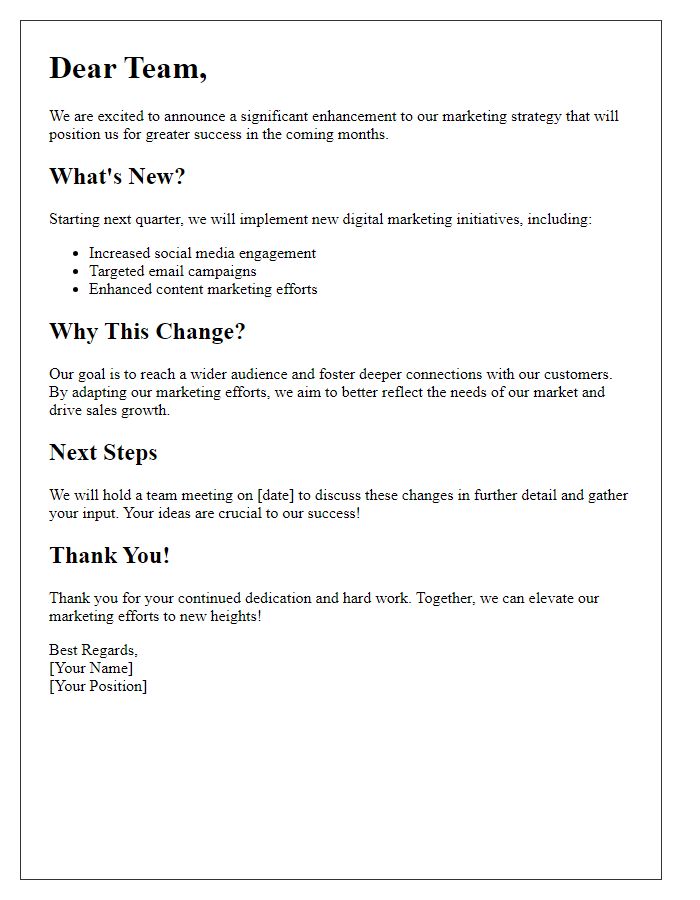
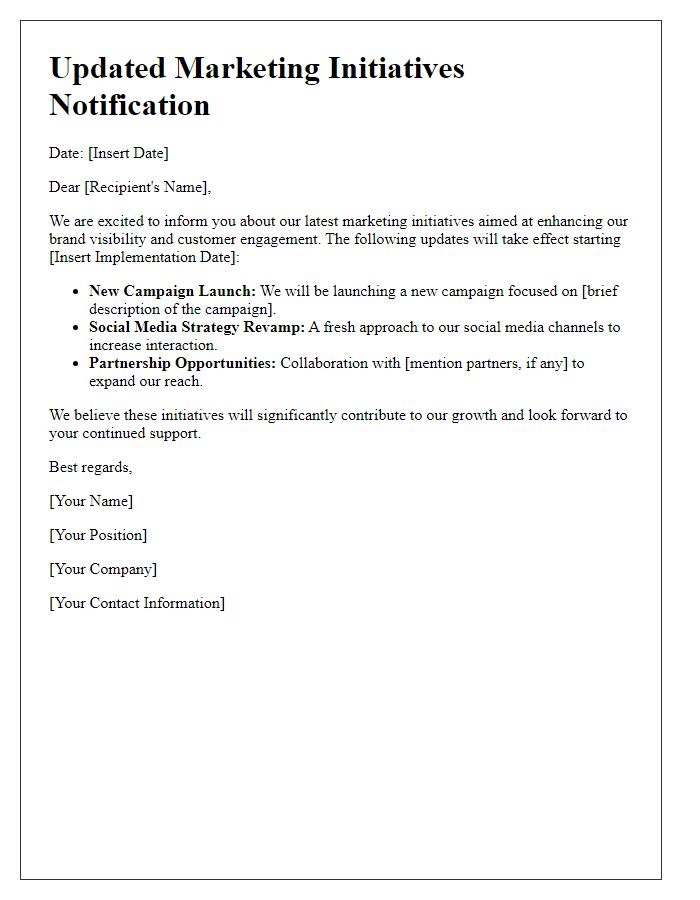
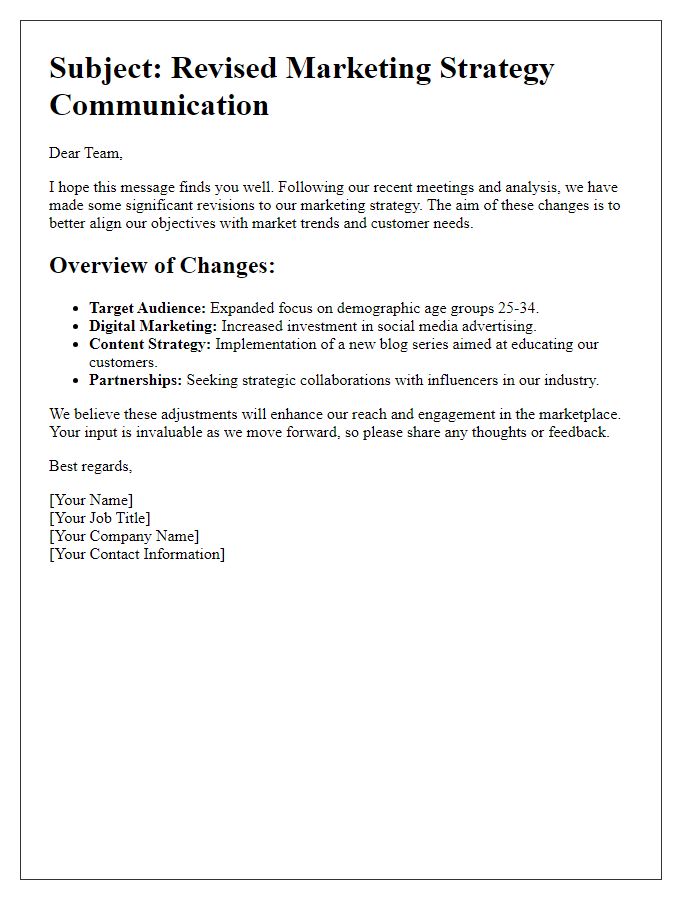
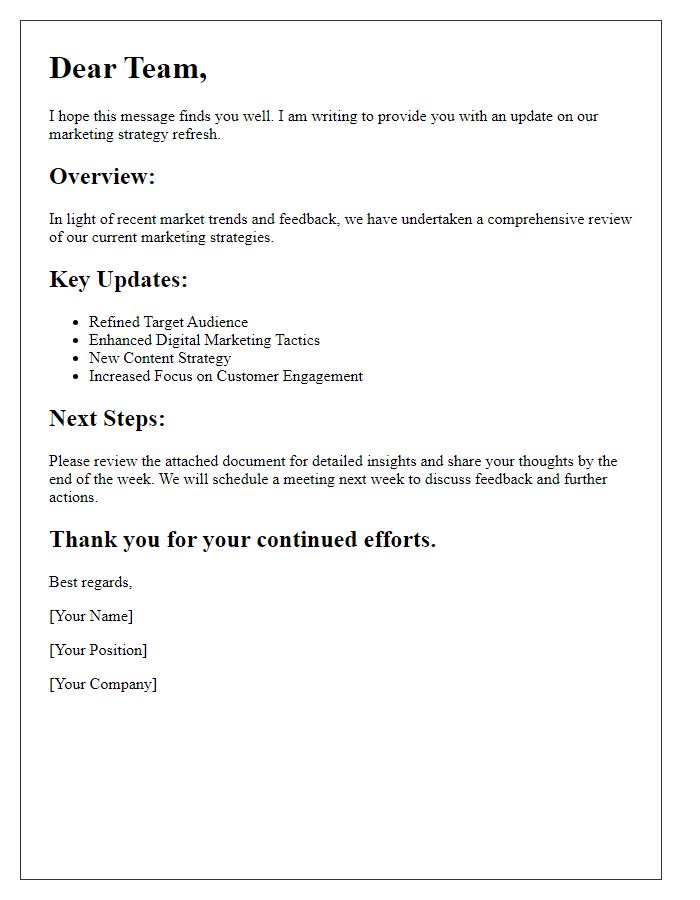
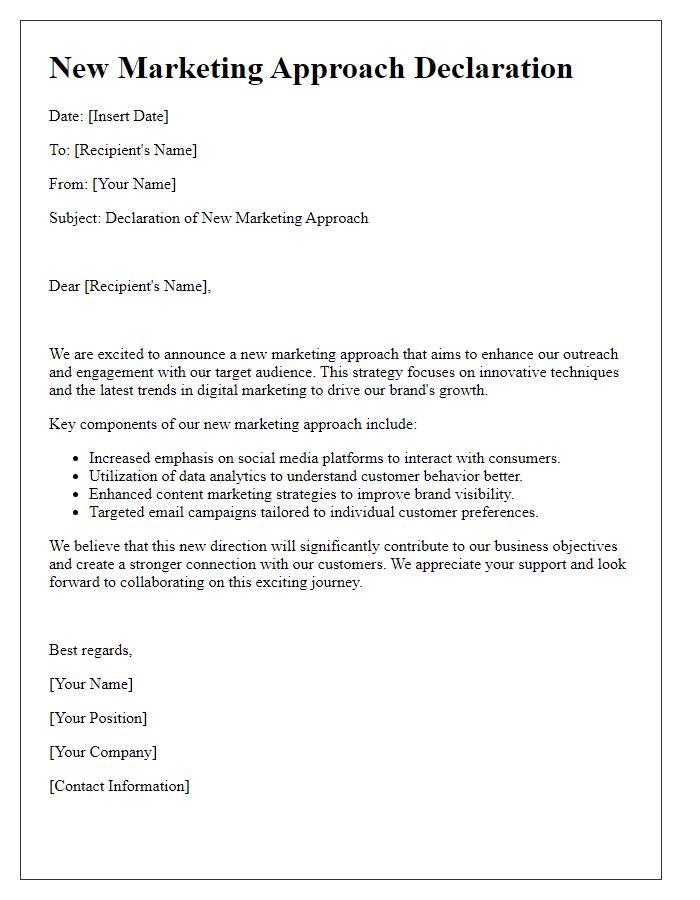
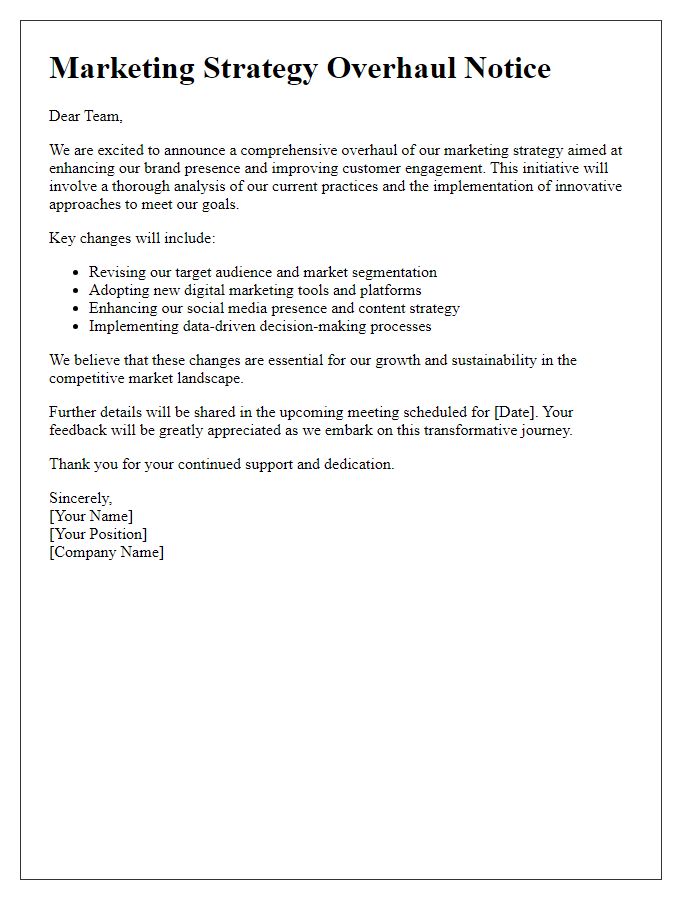
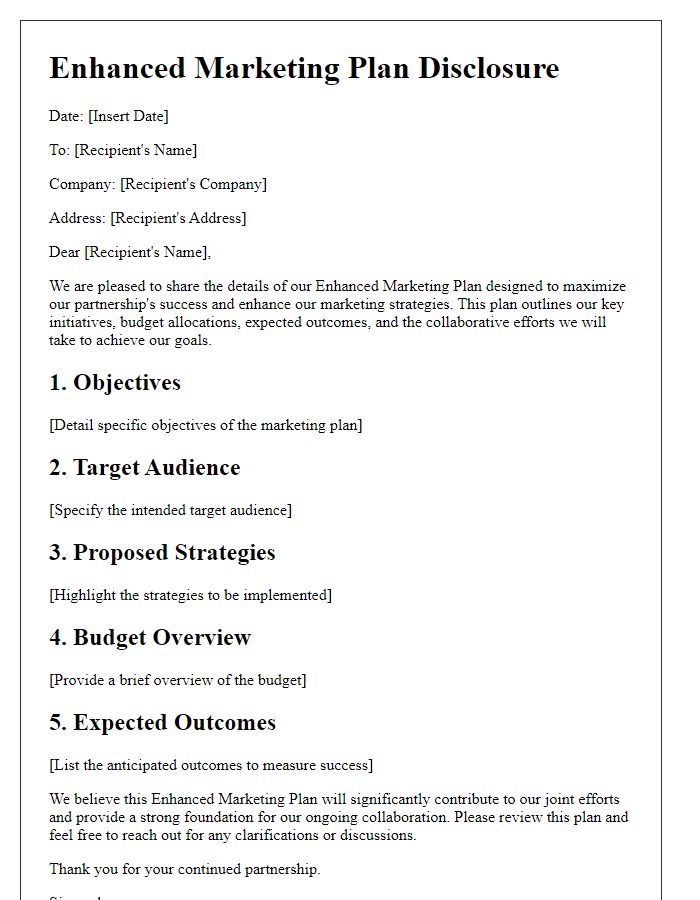
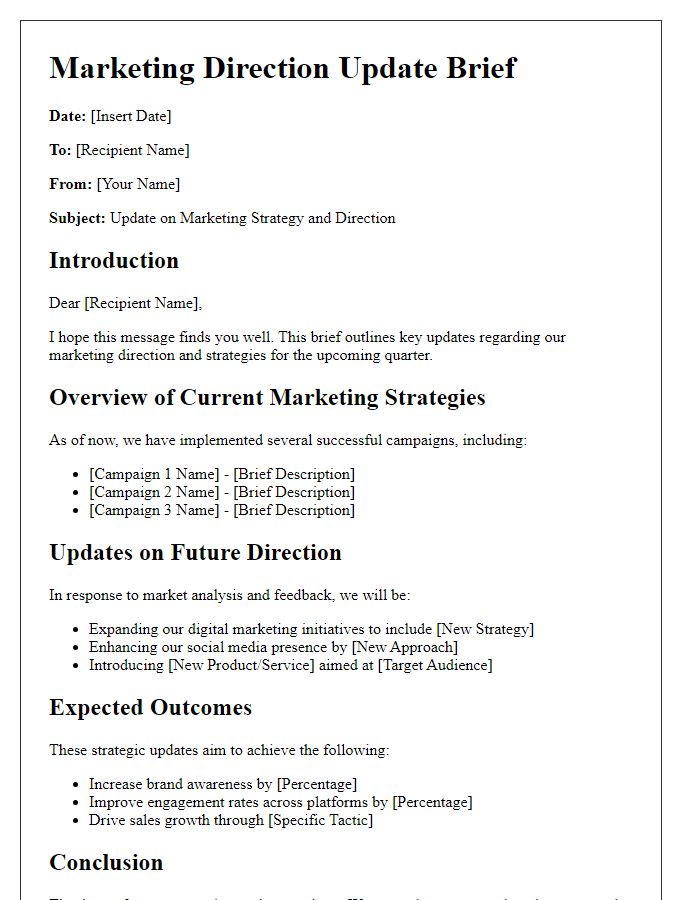
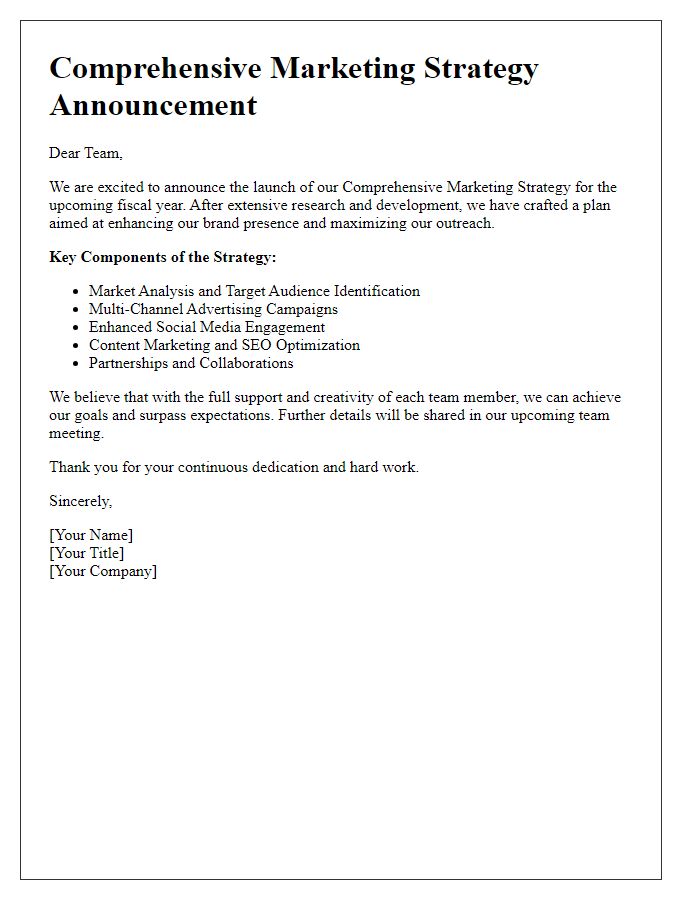
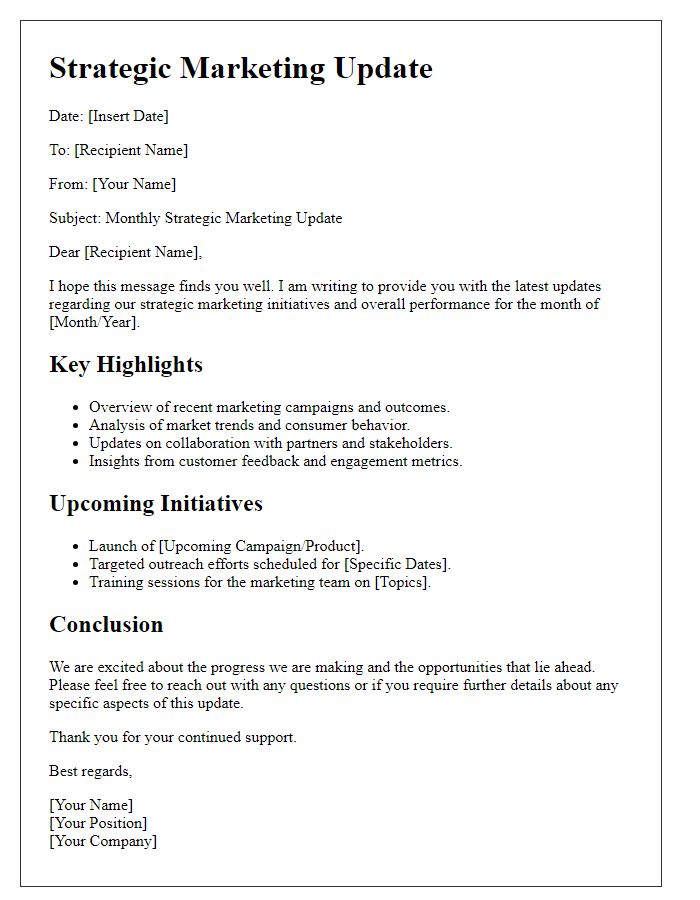


Comments